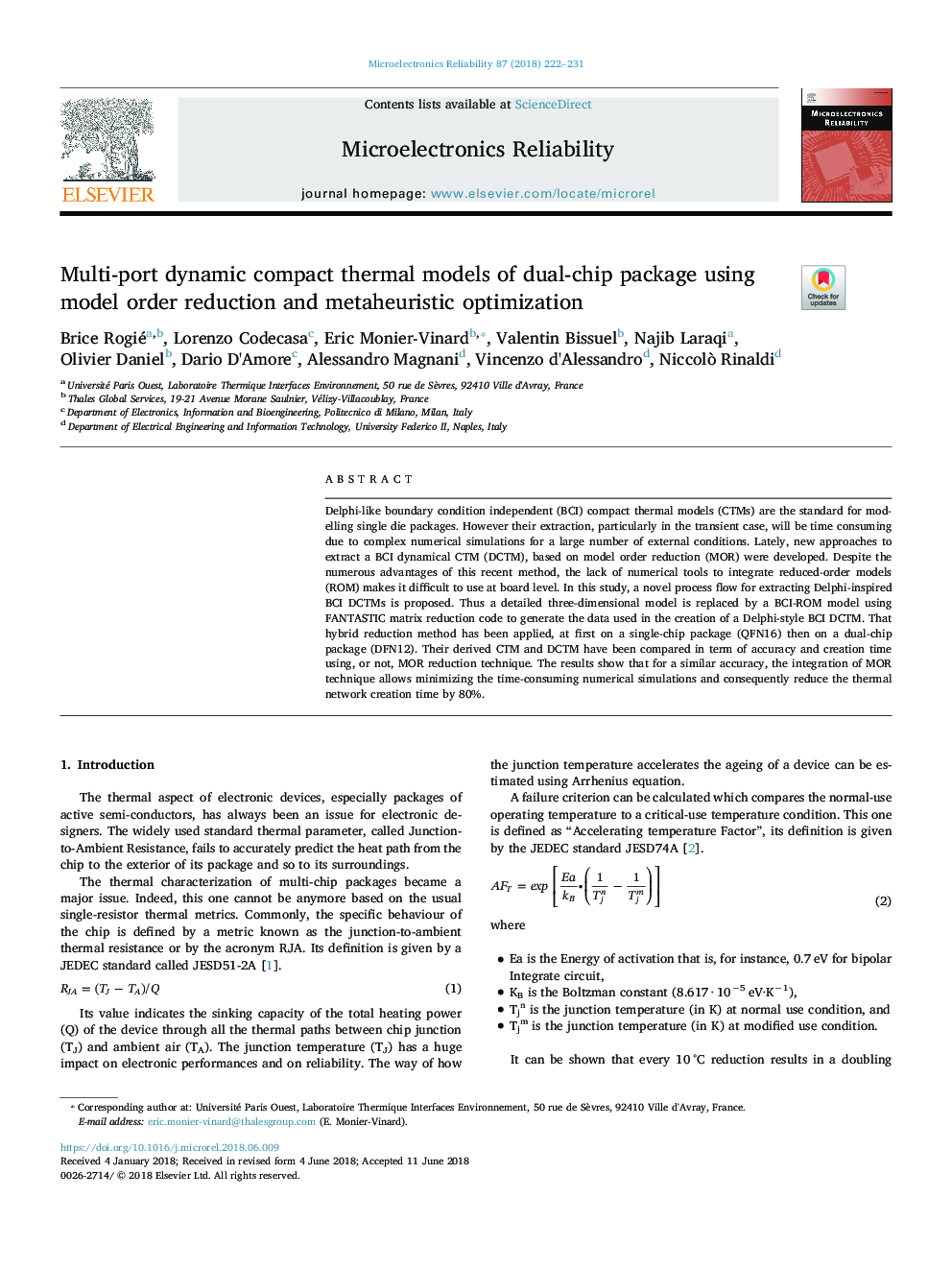| Article ID | Journal | Published Year | Pages | File Type |
|---|---|---|---|---|
| 6945489 | Microelectronics Reliability | 2018 | 10 Pages |
Abstract
Delphi-like boundary condition independent (BCI) compact thermal models (CTMs) are the standard for modelling single die packages. However their extraction, particularly in the transient case, will be time consuming due to complex numerical simulations for a large number of external conditions. Lately, new approaches to extract a BCI dynamical CTM (DCTM), based on model order reduction (MOR) were developed. Despite the numerous advantages of this recent method, the lack of numerical tools to integrate reduced-order models (ROM) makes it difficult to use at board level. In this study, a novel process flow for extracting Delphi-inspired BCI DCTMs is proposed. Thus a detailed three-dimensional model is replaced by a BCI-ROM model using FANTASTIC matrix reduction code to generate the data used in the creation of a Delphi-style BCI DCTM. That hybrid reduction method has been applied, at first on a single-chip package (QFN16) then on a dual-chip package (DFN12). Their derived CTM and DCTM have been compared in term of accuracy and creation time using, or not, MOR reduction technique. The results show that for a similar accuracy, the integration of MOR technique allows minimizing the time-consuming numerical simulations and consequently reduce the thermal network creation time by 80%.
Related Topics
Physical Sciences and Engineering
Computer Science
Hardware and Architecture
Authors
Brice Rogié, Lorenzo Codecasa, Eric Monier-Vinard, Valentin Bissuel, Najib Laraqi, Olivier Daniel, Dario D'Amore, Alessandro Magnani, Vincenzo d'Alessandro, Niccolò Rinaldi,
